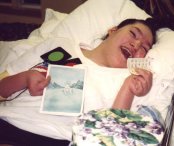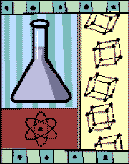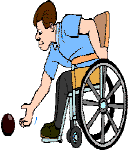The Cerebral Palsy Network
- Spasticity Chart
- Team Approach
- Oral Medications
- ITB
- Rhizotomy
- Orthopedic Surgery
- Brain Injuries
- Casts & Braces
- Physical Therapy
- Glossary Terms
- Credits
- Botox
Around CPN
Resource
Center
Casts and Braces
by Darius Picking, C.O. and Kathy Molina
Serial casting and braces are two treatment options for reducing spasticity and stretching contracted muscles. Casting and braces can be used alone as a treatment method or in conjunction with other methods. For example, after children receive medication to reduce spasticity, they have less muscle tone and a cast may be necessary to stretch to help prevent contracture.
Static bracing
Static (does not move) bracing provides a solid stretch for a length of time. Serial casting often is used to progressively bring a foot up and stretch the calf muscle to obtain an improved position. With serial casting, a cast can be replaced weekly or bi-weekly to stretch the muscle in small increments.
Braces often are used after a child has finished with serial casting because they are helpful in maintaining the progress achieved. Not wearing the appropriate brace may slow or halt progress being made. The goal of casting and braces is to support, maintain range of motion and allow the child as much mobility as possible.
Dynamic bracing
Children with spasticity may tend to land on their toe to forefoot when walking, or walk with their foot rotated in or out. Dynamic (flexible) braces can improve function during walking by:
-
Positioning the foot so it makes appropriate contact to the ground.
-
Stabilizing the foot and ankle for weight bearing: This helps to support body weight and prevent falling.
Braces can also minimize tripping by helping children to swing their feet forward rather than dragging them on the floor or catching them on their legs.
Different needs
Each child responds differently to various treatment methods. Because casting and bracing are temporary, they can be tried as alternatives to reducing spasticity.
Children and parents need to be informed about exactly how to place the brace on the limb, how long it is to be worn and how to watch for and prevent skiing problems that may occur.
Credit for this article goes to Darius Picking, C.O. and Kathy Molina and Exceptional Parent Magazine
This site designed & maintained by Mystic Dawn Web Creations. The Cerebral Palsy Networkę1997/2003. All graphics are the exclusive property of CPN, unless otherwise indicated. Contact CPN at Cerebral Palsy Network for further information.
Last updated

Amanda the reason CPN was
started
CPN
Reunion 2003

CP
Research
What's happening Today with
Cerebral Palsy

Special
Olympics
What's happening with
Special Olympics in 2003

CP
& Education
What's happening with
Special Need and Education in 2003